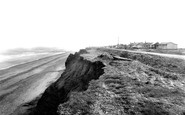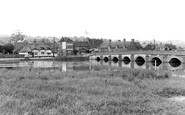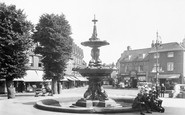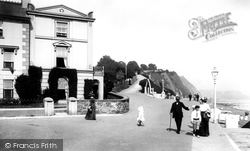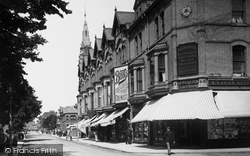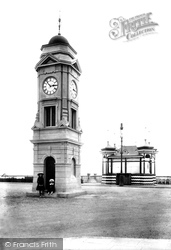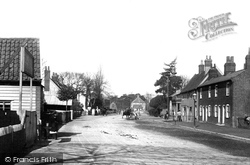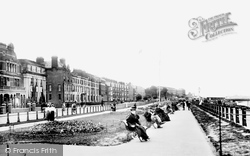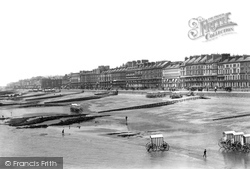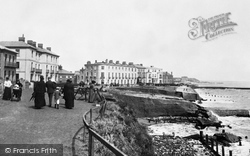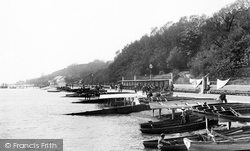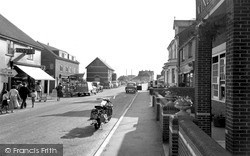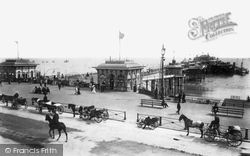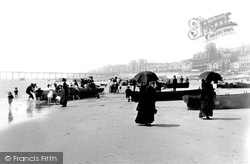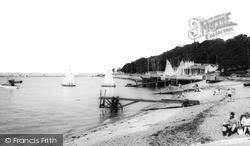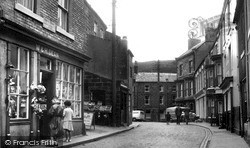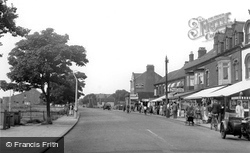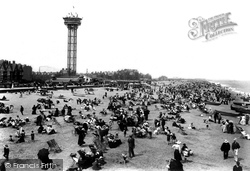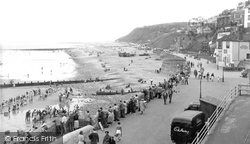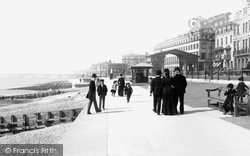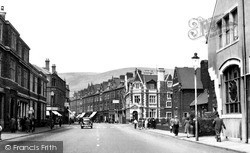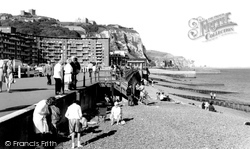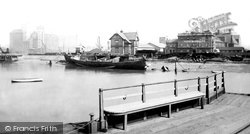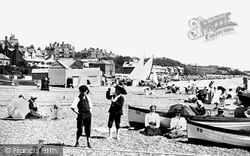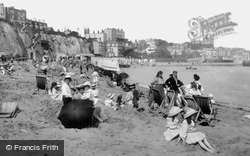Places
1 places found.
Did you mean: selside ?
Those places high-lighted have photos. All locations may have maps, books and memories.
Photos
83 photos found. Showing results 101 to 83.
Maps
11 maps found.
Books
2 books found. Showing results 121 to 2.
Memories
176 memories found. Showing results 51 to 60.
Seaside Holidays
1954-55 we used to stay in a Wooden Bungalow on the cliff top, it was called Bay View and there was also a small, (Tiny) chalet in the front garden . At that time , the cliff edge was possibly 15 metres or so from the bungalow ...Read more
A memory of Skipsea in 1954 by
Growing Up
I was born on the 24th of July 1929 above a shop next to a pub called the Rose of Denmark, in Hotwells, Bristol, very convenient for Father to wet his whistle and my head at the same time. Father was born in 1893, Mother in 1895. They ...Read more
A memory of Bristol in 1930 by
The Hough
when I was about a year old I moved to the Hough from Englesea Brook, where my parents lived for a couple of years. I went to school at Shavington and was good friends with John Addison, Alan Giller (the latter ...Read more
A memory of Hough by
The Railway
I was born in 1941 in Cefn Coed House, Pentwyn, Upper Cwmtwrch. The house I was brought up in was one of five my grandfather, Richard Lougher, had built for his chiidren. At that time there was a road, a railway, and the River ...Read more
A memory of Upper Killay in 1940 by
The Intake Social Club Outings
After the Second World War had finished, and the people were already used to rationing, the Committee members of the Intake Club decided to relieve the hardships on the residents of Intake a little ...Read more
A memory of Intake in 1948 by
Fishing Under The Arches
I was born Marilynne Thompson at 17, The Lynch, Polesworth in January 1952. My mam and dad, Peg and Geoff Thompson both worked at Ensor's brickyard. When I was about two or three years old we moved to a cottage ...Read more
A memory of Polesworth in 1961 by
The Good Old Days Continued
I also recall the days when the old tramp used to go around the bins in the old market hall looking for food, and old Les the deaf mute who used to hang around the taxi rank on Market Hill, he used to go to Warwicks fish ...Read more
A memory of Luton by
Quality Of L Ife
I was born in Beaconsfield in 1946, but grew up in Micklefield, Melbourne Road to be exact. Oh what lovely memories I have! Walking in Kings Woods with my father and picking bluebells; buying a threepenny bag of chips and ...Read more
A memory of High Wycombe in 1952 by
Paignton Was My Crucible 1947
My mother gave life to me in Paignton hospital (now a hospice I believe) in July of this year (1947) and I spent much of my early years in and around this lovely little town. Not so lovely or little now but still ...Read more
A memory of Paignton in 1947 by
Growing Up In Southall
I grew up in Southall in the 1940s and 50s. We lived in Gordon Road in a terraced house that backed onto The Tube. We had an outside toilet, no bathroom and, until I was about 6, no electricity. At the age of 5 I could ...Read more
A memory of Southall in 1945 by
Captions
378 captions found. Showing results 121 to 144.
On the left is an imposing villa, remarkably restrained in character for the seaside, with its decorative motifs from classical architecture.
Lowestoft is very much a mixture of fishing port and seaside resort, the latter the result of the arrival of the railway in the mid 19th century.
Nearby was the town's ornate bandstand, which was very different in style to the ones erected at the other Sussex seaside resorts.
At this time, Felixstowe enjoyed popularity as a seaside resort, but the dream of eccentric local landowner Colonel Tomline to transform the town into a major port had not yet materialised - that was to
Two enterprising businessmen laid out this seaside resort in the early 1830s, and the arrival of the railway in 1833 encouraged its growth.
Hastings emerged as a seaside resort in the early 19th century, and expanded rapidly from its kernel of a fishing port and town.
Walton on the Naze was developed as a seaside resort from the early 19th century.
Southend, the famous Thames estuary seaside resort, was developed from the late 18th century onwards. Originally it was a few fishermen's huts at the end of a lane south of Prittlewell.
Round the corner to the Eastbourne Road, with The Bay Hotel on the right, the architectural quality drops sharply to typical seaside nowhere.
The late Victorian and Edwardian buildings are part of the expansion of Felixstowe as a seaside resort.
The ships tied up at the seaward end show the original function of seaside piers.
The sands are replete with bathing machines, boats, children and ladies with parasols: Victorian seaside gentility. Note the perambulators in the centre of the picture.
Here we have a peaceful scene looking towards Westcliff.A mobile jetty is ready for use.This beach is far less crowded than those shown in the 1950s, the Indian Summer of the British seaside town.The
A pre-requisite of an English seaside holiday has always been a bucket and spade and these two young visitors study the selection offered for sale by W and H Dean.
Looking in the opposite direction, away from the coastline, our seaside resort tour peters out with busy Victorian terraces and the taller 1927 building on the right; beyond is the footbridge across the
Ever since the arrival of the railway, Great Yarmouth has been a popular seaside resort, and whilst not the quiet getaway some might prefer, it was always a great pull for working class families from London
Cromer developed as a seaside resort in the early 19th century - it is mentioned as a bathing-place in Jane Austen's 'Emma'. The Esplanade was laid out in 1894.
Started as New Hastings by James Burton and his architect son Decimus in 1828, and later renamed St Leonards, this seaside resort is a grand composition of palatial stucco terraces.
Situated on the mouth of the Avon, it is a popular seaside resort, and boasts a harbour with the deepest berthing facilities in the British Isles.
Mary-in-Castro 400 feet above on the cliffs behind, and the famous white cliffs receding into the distance, holidaymakers settle down to enjoy their day at the seaside.
The dock did not succeed until long after his death, but the railway meantime stimulated the development of Felixstowe as a seaside resort.
This beach is far less crowded than those shown in the 1950s, the Indian Summer of the British seaside town.
By this time, Felixstowe was at the height of its popularity as a seaside resort, with its south-facing beach.
All the familiar seaside fun is here: happy holiday-makers digging in the sand, deckchairs and bathing machines fill this evocative picture of Edwardian Broadstairs.The steps and the lift house are
Places (1)
Photos (83)
Memories (176)
Books (2)
Maps (11)

